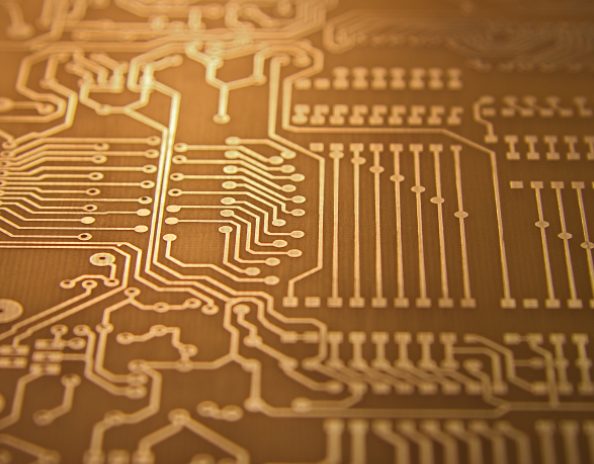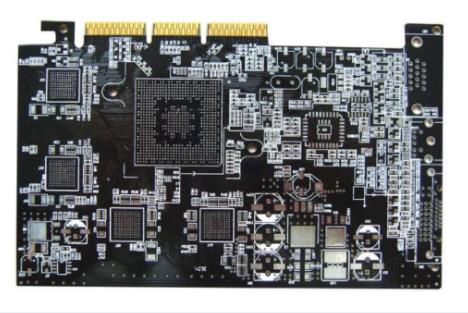
High speed PCB and wireless charging solution release PCBA
How to design characteristic impedance
In the high-speed PCB design, we often control the characteristic impedance of high-speed signal lines to optimize the signal quality What is the characteristic impedance?
1. Principle of transmission line
Before introducing the characteristic impedance, let's review the basic principle of the transmission line introduced in the "Signal Integrity Video". As shown in the figure on the left, the RLGC model with lumped parameters is used for low-frequency circuits, while the RLGC model with distributed parameters is used for high-frequency circuits on the right.
Solving the transmission line calculus equation is easy for you, and I won't introduce it here. The result of this equation is that the attenuation constant, characteristic impedance and phase shift constant of PCB transmission line can be obtained. The specific meaning is described in detail in "Signal Integrity Video". Here we mainly introduce the application of PCB characteristic impedance. The following is the characteristic impedance formula obtained by solving the equation, but it is not very useful because you cannot know R, L, G and C corresponding to the tissue length.
2. Effect of characteristic impedance mismatch
The characteristic impedance of the transmission line refers to the impedance corresponding to each point on the line when high-speed signals are transmitted on the PCB line. We hope that the characteristic impedance of the transmission line will not change suddenly, because the sudden change of the transmission line will cause the signal reflection, thus affecting the signal quality.
3. Selection of characteristic impedance
The characteristic impedance of a PCB is determined by the matching resistance ZL at the load end and depends on the specifications of various interfaces Characteristic impedance error is mainly affected by PCB factory process, which can be controlled between 5% and 10% The following is a general-purpose interface PCB impedance control
USB differential cable 90 Î)
PCIE differential line 100 Î)
RF single ended transmission line 50 Î)
Common single ended transmission line 50 Î)
Circuit board

4. PCB characteristic impedance design
At present, PCB manufacturers usually use polar si9000 software to calculate characteristic impedance. Let's take a single ended signal line as an example. There are four setting parameters: dielectric constant, dielectric thickness, line width and copper foil thickness.
Dielectric constant Er1: the dielectric constant of the plate. The FR4 plate is usually 4.2-4.5.
Medium thickness H1: the thickness of plate or PP.
Line width W1/W2: Line width of PCB wiring.
Copper foil thickness: 0.5/1/2oz, etc. according to the actual situation.
Wireless Charging Plan Launches Polychlorinated Biphenyls
5W/7.5W/10W/15W power self adjustment; It contains 32 bit high-performance processor; Support QI (BPP EPP) certification and conform to WPC1.2.4 agreement; High precision FOD calculation; Integrated dual channel full synchronous digital demodulation; Support OCP/OVP/OTP; Support QC2.0/QC3.0/AFC; Support DPL dynamic power regulation; Support simultaneous charging of multiple devices; Support function customization; USB upgrade is supported.
The product features are as follows:
1. Monolithic 5W/10W transmitter solution
2. Applicable to A6/A11/A28/MP-A2, etc.
Certified by WPC 1.2.4
4. Support 10W fast charging protocol
5. Efficiency up to 85% Fast charging, 78%
6. Integrated synchronous dual channel full digital demodulation circuit
7. Over temperature, over voltage, soft and hard body dual overcurrent and short circuit protection
8. FOD function
9. Power lock
10. Enhance vertex off
11. Self adjusting input voltage 5V/9V
12. Support multiple transmitters to share input power
The products are widely used in:
L Smartphones and smart wearables
L Automotive Electronics
L Medical
L Furniture and digital products
L Power pack
L Home office, airport and catering chain wireless charging platform and other fields
Cooperation mode
– Customized development of wireless charging technology solutions for various electronic products
Production of wireless charger products and finished products
– Sales of wireless charged PCBs
– Sales of core MCU for wireless charging authorization
– Negotiation and cooperation mode of other parties
Our advantage: complete goods
– Professional Services
– Original
– Efficient procurement
– Save time and effort







